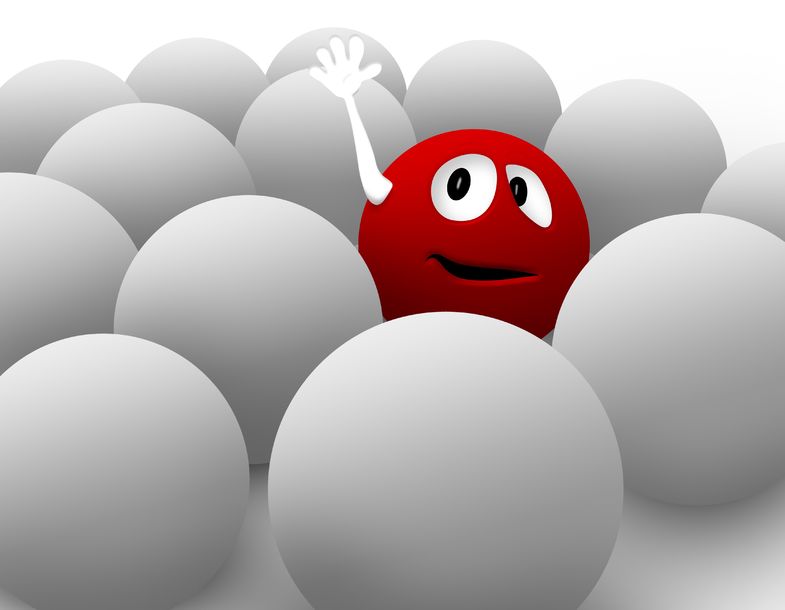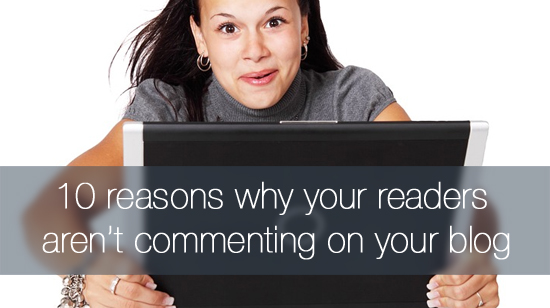Curatti Best Articles of 2016 – Part One

Since our launch 3 years ago, Curatti has evolved into a crowd-sourced blog. Was this intended? Probably not! But it’s quite a journey, and one that we lightly guide , but ultimately go along with.
In any given week, we will get several inquiries by potential new guest bloggers. There are also no shortage of requests for us to curate around great Infographics – something we’ve also been happy to bring to our readers.
Ultimately, the way we have evolved, we owe a debt of gratitude to each and every one of our contributors and supporters. Let’s not forget all of the great writers who gave us permission to republish their articles. The list of those names reads like a who’s who of established thought leaders, and will be published at the end of this retrospective series.
For now, we will present you with excerpts from one article by each contributor who has posted 2 or more articles this year. There are so many, we must break this into 3 parts.
Before and after each excerpt, you’ll find links so that you can read the rest of the article, if you desire. Some very interesting and helpful stuff here!
In purely alphabetical order, the first 10 articles are by:
If you wish, you may click on any name to go directly to their content.
Norman Arvidsson
10 Types of Social Media Content People Share the Most
 Creating content for social media has two main purposes. The first is to create content people will engage with to drive traffic to a website. The second purpose is to create content that grows your social media channels. No matter which goal you’re after, you’ll get the biggest impact for both just by making the content as sharable as possible.
Creating content for social media has two main purposes. The first is to create content people will engage with to drive traffic to a website. The second purpose is to create content that grows your social media channels. No matter which goal you’re after, you’ll get the biggest impact for both just by making the content as sharable as possible.
When people like your content enough to share it, it basically creates a small army of people that are doing your marketing for you. These people aren’t shills though – they’re only going to share the content if there’s something in it for them. Usually this means high-quality and enjoyable.
Sharable content needs to be relevant to the user in some way. This can mean it’s funny or insightful, but it has to bring some type of value. Your content may be brilliant, but if it’s not digestible on social media, none of that matters.
So what kind of social media content are people sharing the most?
You’ll need to click here to see the 10 types that succeed.
Shane Barker
How to Find and Engage Social Media Influencers
 What many marketers don’t realize is that just because someone is an influencer, that doesn’t mean they’re the right fit for a specific brand or campaign. In order to find the right influencers, you need to identify potential influencers, and then filter them based on specific factors. Use the following metrics to find the best influencers for your campaign:
What many marketers don’t realize is that just because someone is an influencer, that doesn’t mean they’re the right fit for a specific brand or campaign. In order to find the right influencers, you need to identify potential influencers, and then filter them based on specific factors. Use the following metrics to find the best influencers for your campaign:
- Relevance – Is the influencer influential in your target niche? Do they have an influence on your target audience? Do their views align with yours?
- Reach – Does the influencer have a large enough following to make an impact? Can they help you boost your visibility within your target audience base?
- Engagement – Does the influencer regularly engage their fans to stir their interest? Will they be able to drive enough engagement to increase conversions?
Now that you understand the most important metrics for identifying influencers, you can start your search for the top influencers in your industry. Take a look at some of the best strategies and tools for finding influencers. (Actually, you’ll need to click here to read more!)
Diana Beyer
B2B Branding: The Importance of a Great Value Proposition
 Do B2B Companies Need to Be Mindful of Branding?
Do B2B Companies Need to Be Mindful of Branding?
The short answer is yes. The longer answer is that it may not be so easy. B2B products and services are not fun or exciting to individual consumers. Instead, B2B marketers have to appeal to other companies, often to a group of individuals within those companies, who make team purchasing decisions. This makes branding more difficult perhaps, but it is still important, despite the arguments often presented by naysayers. They go something like this:
- B2B customers are rational decision-makers. Branding is more of an emotional appeal to individual consumers
- B2B sales are consummated as a relationship between a sales rep and buyer(s).
- B2B products and services don’t have a cool appeal. What matters is price and efficacy of that product or service.
- A B2B target audience is often too small for a branding message strategy, so targeted advertising is more effective.
- A lot of B2B products and services are complex and cannot be reduced to things like logos and slogans.
But branding is far more than a logo or a slogan. It is about bringing value to customers, whether they are individual consumers buying shoes, or a company purchasing new project management software.
Branding means communicating value and benefits to a potential customer, and that is certainly within the realm of B2B marketing.
For examples on how to take the lead from B2C companies, click here
Katy Blevins
The Evolution of the Social Media Management Model
 Keeping pace with social media trends is no longer optional for today’s business owner. Across every industry, most of us would agree that our long-term success is intrinsically tied to our ability to drive conversion rates by authentically engaging our audience.
Keeping pace with social media trends is no longer optional for today’s business owner. Across every industry, most of us would agree that our long-term success is intrinsically tied to our ability to drive conversion rates by authentically engaging our audience.
It’s what keeps us up at night and keeps us questioning all day long. Do my customers hear me?
A recent article by Patrick Kitchell explored the challenges of quantifying the impact of social media management, suggesting the current model was collapsing due to the oversaturation that consumer’s face in the onslaught of content marketing. Is there just too much information out there? How do I know that my efforts are paying off for my business?
Everyone has asked themselves this question.
Are my efforts to engage online effective or futile? Am I wasting my time? Am I talking to myself?
Here’s the good news. Today’s social media management model is not collapsing, it’s evolving. And the changes on the horizon may level the playing field for business owners, big and small.
To read about the changes, click here
Louisa Brenton
6 Tips How to Use Instagram for eCommerce
 Okay, so there are bigger networks out there than Instagram. The network has 400 million users while Facebook has four times that amount. Still, as Business Insider reports, that number hides some important realities.
Okay, so there are bigger networks out there than Instagram. The network has 400 million users while Facebook has four times that amount. Still, as Business Insider reports, that number hides some important realities.
Instagram users are far younger on average than Facebook users and they view the network as far more important (32% say that Instagram is their most important social network while only 14% say the same for Facebook). What’s more, while Facebook active user-ship has been shrinking according to some reports, Instagram has experienced phenomenal growth.
All that means that for businesses that are visual in nature, want to have a youthful hip brand and that are targeted at millennials, Instagram is simply the way to go. That said, if you want to use it, you do have to make some changes. It isn’t Facebook, after all (and that’s kind of the point). So let’s look at some strategies you can use to push your eCommerce here.
To read the 6 tips, click here
Andy Capaloff
Is Influencer Marketing Really So Easy?
 In Laymen’s Terms, What is Influencer Marketing?
In Laymen’s Terms, What is Influencer Marketing?
To summarize very quickly, it leverages the age-old concept of word-of-mouth. We’re all aware that this has overtaken traditional advertising in terms of importance to entire classes of consumers. We ask our friends and associates who have something we want, if they like it. Or we listen with interest when they speak enthusiastically (or in outright disgust) about their latest purchase or restaurant experience. We google for peer reviews.
The influencer part is akin to the modern day spokesperson. There are people who have earned respect for the information they impart for free in their blogs or on LinkedIn. Some have written landmark books, coined phrases many of us take for granted, or revolutionized the way we do business. Others are on the bleeding edge of new marketing apps. They appear on tweet and video chats. We trust them.
It is a modern interpretation of an advertising method with a less than auspicious beginning….
To read a brief, slightly tongue-in-cheek history of Influencer marketing, a caution, and some simple advice to follow, click here
Patrick Cole
Content Marketing in E-commerce: 7 Case Studies
 How do you determine which content marketing practices are best for your E-commerce business? Well, you can begin by looking at other successful brands to see what they are doing now, and what they’ve learned along the way. There’s no single content marketing plan that works for every business, but the following case studies should highlight at least a few things to emulate.
How do you determine which content marketing practices are best for your E-commerce business? Well, you can begin by looking at other successful brands to see what they are doing now, and what they’ve learned along the way. There’s no single content marketing plan that works for every business, but the following case studies should highlight at least a few things to emulate.
Envelopes.com Using Email to Solve The Issue of Shopping Cart Abandonment in E-commerce
People abandon their shopping carts for a variety of reasons. Sometimes it’s a simple matter of a disruption that draws the customer away from the page. In other cases, it’s a last minute moment of hesitation that causes people to abandon their carts.
Whatever the reason, the content marketers at envelopes.com decided that it was worth their while to get those customers back. So, they created an email campaign to contact customers who had left their shopping carts before completing their purchases. It took a bit of testing to work out the kinks, but in the end, they were able to raise their checkout conversion rate by over 60 percent.
Takeaway: Don’t consider these customers to be lost. Many simply need a reminder to come back and close the deal.
To read the other 6 case studies, click here
Kerry Creaswood
How To Really Get Noticed on Social Media
 It can feel like you are in the old lost and found box back in school – you know – that stuff that was never claimed and just sat there forever. You’ve set up your profiles, you’re posting every day, and still no one is coming, even to look through the box. You’re beginning to think that all of this is a waste of time and that only the big boys who already have a huge brand following – like Oreo – are getting traffic on social media.
It can feel like you are in the old lost and found box back in school – you know – that stuff that was never claimed and just sat there forever. You’ve set up your profiles, you’re posting every day, and still no one is coming, even to look through the box. You’re beginning to think that all of this is a waste of time and that only the big boys who already have a huge brand following – like Oreo – are getting traffic on social media.
It can be pretty depressing.
But, perk up. There are things you can do as a small business to get and grow a following, not the least of which is patience – otherwise you’ll give up. Growing a following, despite some of the huge success stories you have heard, usually takes time. Be like the tortoise in Aesop’s The Tortoise and the Hare fable, slow and steady wins the race. Here are some things that can make that turtle move a bit faster.
To read 5 tips on how to get your content noticed, click here
Jonathan Emmen
Developing a B2B-Centric Content Marketing Strategy
 Content is the jewel of digital marketing. Without great content, it is very unlikely that any business will survive online. People (or more to the point, potential clients), search the web looking for information more often than for products or services, as you probably know. With B2B businesses, this is not different.
Content is the jewel of digital marketing. Without great content, it is very unlikely that any business will survive online. People (or more to the point, potential clients), search the web looking for information more often than for products or services, as you probably know. With B2B businesses, this is not different.
But, despite the fact that many B2B businesses are very aware of the importance of content marketing, it doesn’t mean that they are getting the results they expected with it. According to the report B2B Content Marketing 2016: Benchmarks, Budgets, and Trends – North America, produced by Content Marketing Institute and MarketingProfs, and sponsored by Brightcove, 55% of B2B marketers confessed they have very little idea of what is an effective or a successful content marketing program, just for starters. And here is where the need to develop a strategy becomes essential.
To read about the difference between B2B and B2C Content Marketing and more, click here
Alice Elliott
10 Reasons Your Readers Aren’t Commenting On Your Blog
 It can be extremely soul destroying putting your heart and soul into creating a fantastic post, and your readers aren’t commenting on your blog. In fact you get zero feedback, zilch, nothing, tumbleweed bounces across your screen.
It can be extremely soul destroying putting your heart and soul into creating a fantastic post, and your readers aren’t commenting on your blog. In fact you get zero feedback, zilch, nothing, tumbleweed bounces across your screen.
You soon start to doubt your prowess as a blogger. And understandably so, if you get so little recognition for your hard work.
Surely it’s not your fault, but your readers? Or is it the way your blog is designed? Is the rise of social media taking over? Or those pesky spammers ruining everything?
To read the 10 tips, and see Alice’s Infographic, click here
Click here to see “Curatti Best Articles of 2016 – Part Two”. And Happy Holidays!
Image attribution (in order of appearance):
Copyright: ‘http://www.123rf.com/profile_artellia‘ / 123RF Stock Photo
Origin unknown, found here: http://www.marketingclic.com/page/14/
http://gimmemojo.com/blog/2016/04/06/how-to-increase-influencer-engagement/
Copyright: ‘http://www.123rf.com/profile_rawpixel‘ / 123RF Stock Photo
Copyright: ‘http://www.123rf.com/profile_fgnopporn‘ / 123RF Stock Photo
Origin unknown. Many sources
Copyright: ‘http://www.123rf.com/profile_msteigele‘ / 123RF Stock Photo
Copyright: ‘http://www.123rf.com/profile_neyro2008‘ / 123RF Stock Photo
Copyright: ‘http://www.123rf.com/profile_cnapsys‘ / 123RF Stock Photo
Copyright: ‘http://www.123rf.com/profile_rawpixel‘ / 123RF Stock Photo
http://all-free-download.com/free-photos/super-fast.html
Jan Gordon
Latest posts by Jan Gordon (see all)
- Curatti Best Articles of 2022 (And Happy New Year 2023!) - December 28, 2022
- Curatti Best Articles of 2021 (And Happy New Year 2022!) - December 31, 2021
- Curatti Best Articles of 2020 (And Happy New Year 2021!) - December 31, 2020

